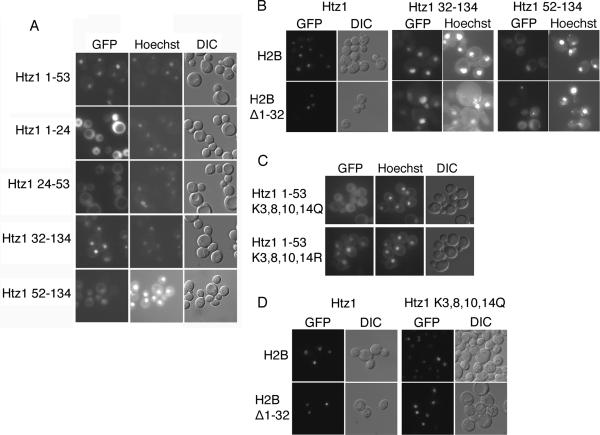Figure 2.
Htz1 contains an NLS in its amino terminus (A) Wild type (WT) yeast containing the indicated plasmid, were induced to express Htz1 residues 1–53, 1–24, 24–53, 32–134 or 52–134 fused to GFP2 and visualized by fluorescent microscopy. Coincident Hoechst staining and DIC is shown. Htz1 32–134 or 52–134 GFP2 expressing strains were induced for an additional 2 hours. (B) JHY200 strains deleted for HTZ1, and expressing wild type H2B or H2BΔ1–32, were induced to express the Htz1- GFP2 fusions indicated. Htz1 32–134 GFP2 and Htz1 52–134 GFP2 expressing strains were induced for an additional 5 hours, and only a small fraction of cells expressed Htz1 52–134 GFP2. Coincident Hoechst staining or DIC is shown. (C) Wild type yeast expressing mutant NLS reporters htz11–53K3,8,10,14Q or htz11–53K3,8,10,14R-GFP2 were visualized by fluorescent microscopy as above. (D) JHY200 strains deleted for HTZ1, and expressing wild type H2B or H2BΔ1–32, were induced to express the Htz1-GFP2 or htz1K3,8,10,14R-GFP2 fusions as above.

